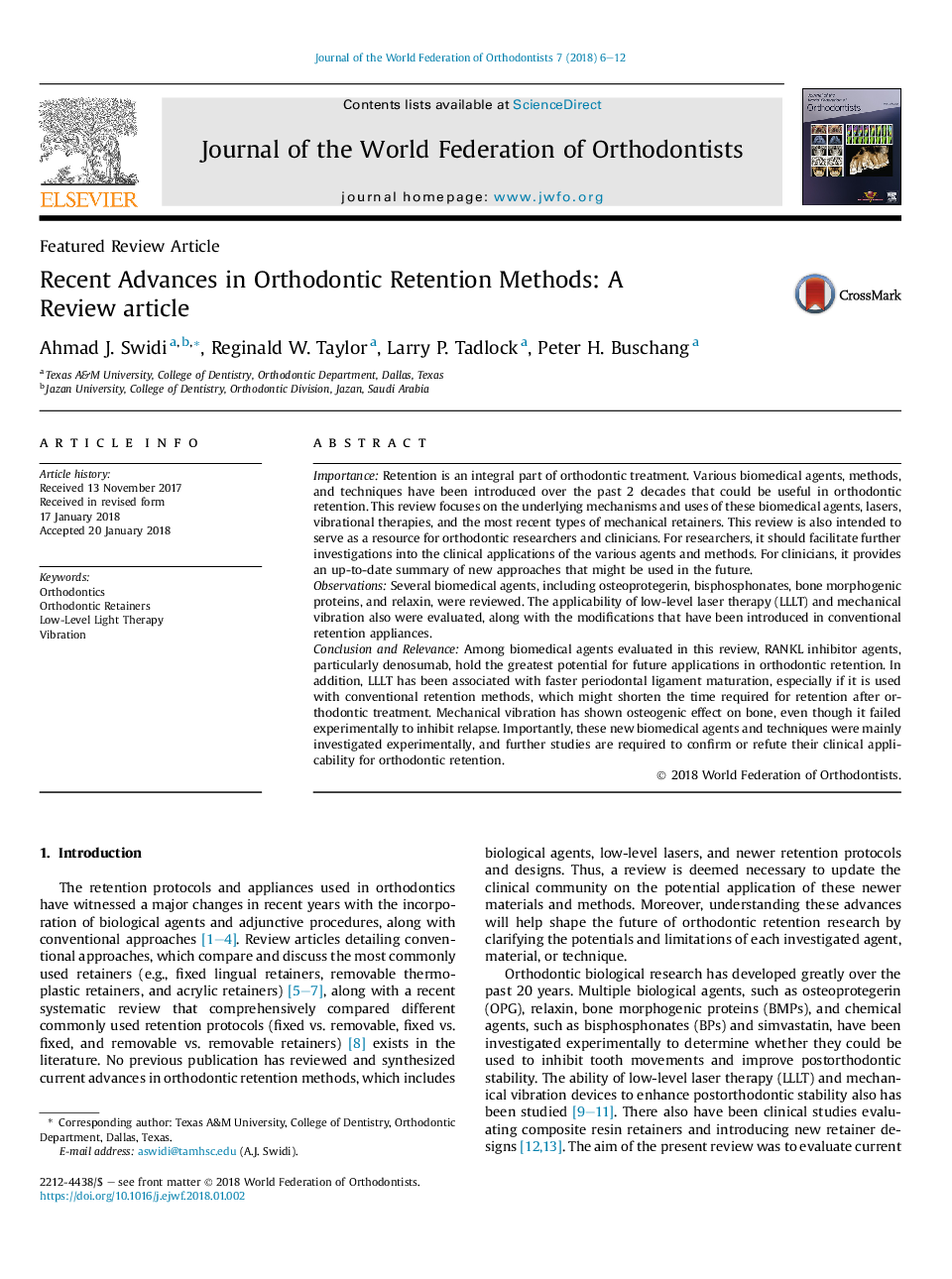| Article ID | Journal | Published Year | Pages | File Type |
|---|---|---|---|---|
| 8759481 | Journal of the World Federation of Orthodontists | 2018 | 7 Pages |
Abstract
Among biomedical agents evaluated in this review, RANKL inhibitor agents, particularly denosumab, hold the greatest potential for future applications in orthodontic retention. In addition, LLLT has been associated with faster periodontal ligament maturation, especially if it is used with conventional retention methods, which might shorten the time required for retention after orthodontic treatment. Mechanical vibration has shown osteogenic effect on bone, even though it failed experimentally to inhibit relapse. Importantly, these new biomedical agents and techniques were mainly investigated experimentally, and further studies are required to confirm or refute their clinical applicability for orthodontic retention.
Related Topics
Health Sciences
Medicine and Dentistry
Medicine and Dentistry (General)
Authors
Ahmad J. Swidi, Reginald W. Taylor, Larry P. Tadlock, Peter H. Buschang,
